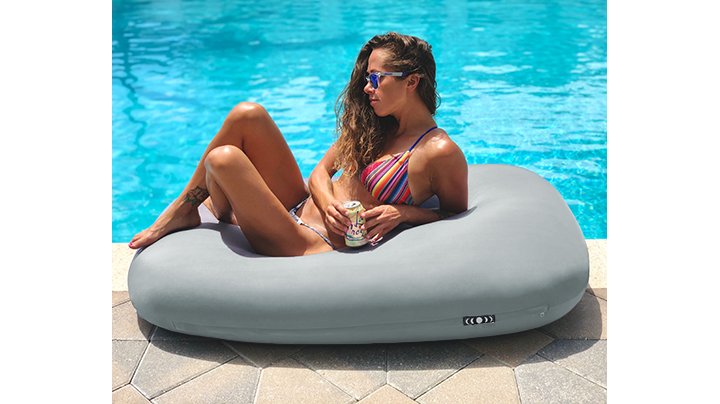73 BEST Tips Self Tan Before And After (Facts)

-
Self Tan Before And After: Ultimate Guide
-
Understanding Self-Tanning
- How Self-Tanners Work
- The Science Behind the Tan
-
Preparing for Self-Tanning
-
Applying Self-Tanner
-
Aftercare and Maintenance
-
Choosing the Right Self-Tanner
-
Achieving a Natural-Looking Tan
-
Common Concerns and Troubleshooting
-
Final Thoughts
-
Tips for an Even and Long-Lasting Tan
-
Embrace Your Beautiful Glow
-
FAQs (Frequently Asked Questions)
-
Related Posts:
- 81 BEST Tips Self Tan Risk Of Cancer
- 73 BEST Tips Best Self Tanning Lotion For Men
- 73 BEST Tips Home Remedies For Self Tanning (Facts)
-
Please note
-
Conclusion
Disclosure: Some of the links in this article may be affiliate links, which can provide compensation to me at no cost to you if you decide to purchase. This site is not intended to provide financial advice and is for entertainment only.
Self Tan Before And After: Ultimate Guide
Self-tanning has become a popular method for achieving a sun-kissed glow without the harmful effects of UV rays.
With advancements in self-tanning products, individuals can achieve a natural-looking tan in the comfort of their own homes.
In this comprehensive guide, we will explore the process of self-tanning, its benefits, tips for achieving optimal results, and what to expect before and after applying self-tanner.
Understanding Self-Tanning
How Self-Tanners Work
Self-tanning products contain an active ingredient called dihydroxyacetone (DHA), which interacts with the amino acids on the surface of the skin to produce a temporary tan. DHA is derived from sugar cane or sugar beets and is considered safe for use on the skin.
The Science Behind the Tan
When DHA comes into contact with the proteins in the outermost layer of the skin, a chemical reaction occurs, resulting in the appearance of a tan.
This reaction does not involve the production of melanin, the pigment responsible for natural tanning. The tan achieved through self-tanning products typically lasts for about a week before gradually fading.
Get this IDEAL Moon Pod super-fast!
Get more info about this Excellent Moon Pod!
Preparing for Self-Tanning
Before applying self-tanner, it's essential to prepare your skin to ensure an even and long-lasting tan.
Here are some important steps to follow:
Exfoliate: Use a gentle exfoliant to remove any dead skin cells, ensuring that your skin is smooth and free from dry patches. Pay extra attention to areas such as elbows, knees, and ankles.
Moisturize: Apply a lightweight moisturizer to hydrate your skin. This will create a smooth canvas for the self-tanner and prevent it from clinging to dry patches.
Shave or Wax: If necessary, shave or wax at least 24 hours before applying self-tanner. This allows the skin to heal and avoids any irritation or uneven coloration.
Applying Self-Tanner
Now that your skin is prepped, it's time to apply the self-tanner. Follow these tips for a flawless application:
Start with a small amount: It's always better to start with a conservative amount of self-tanner and build up the color gradually. This will help you achieve a more natural-looking tan.
Use a tanning mitt: Applying self-tanner with a tanning mitt helps distribute the product evenly and prevents streaks. Start at your ankles and work your way up, using circular motions.
Blend well: Take extra care to blend the self-tanner around areas such as elbows, knees, and wrists, where the skin tends to be drier and absorbs more product.
Don't forget your face and neck: Use a self-tanning product specifically formulated for the face and neck. Apply it in a gentle, circular motion, blending it into your hairline and jawline for a seamless finish.
Wash your hands: After applying self-tanner, wash your hands thoroughly with soap to avoid staining your palms.
Allow drying time: Give the self-tanner enough time to dry before dressing, as this will prevent the product from transferring onto your clothes.
Get this IDEAL Moon Pod super-fast!
Get more info about this Excellent Moon Pod!
Aftercare and Maintenance
To maintain your self-tan and ensure it lasts as long as possible, follow these post-application tips:
Avoid getting wet: For at least 6-8 hours after applying self-tanner, avoid activities that may cause excessive sweating or swimming, as this can affect the longevity of your tan.
Moisturize regularly: Keeping your skin hydrated is key to maintaining a longer-lasting tan. Apply a moisturizer daily to prevent dryness and help the tan fade more evenly.
Avoid exfoliation: Steer clear of harsh exfoliants or scrubs, as they can accelerate the fading process. Instead, opt for a gentle cleanser and use a soft washcloth to cleanse your skin.
Touch-ups: If you notice any patchiness or uneven fading, you can touch up your tan using a gradual self-tanning lotion or a self-tanning spray. Be sure to follow the instructions provided with the product.
>> Get expert advice on self-tanning in our in-depth article, BEST Tips on Self Tanning.>>
Get this IDEAL Moon Pod super-fast!
Get more info about this Excellent Moon Pod!
Get now SPECIAL DISCOUNT FOR MY READERS!
Yes, I Want To Check on My Discount NOW!
Choosing the Right Self-Tanner
With a wide range of self-tanning products available in the market, it's important to choose one that suits your skin type and desired outcome.
Here are a few factors to consider when selecting a self-tanner:
Formulation: Self-tanners come in various forms, including lotions, sprays, mousses, and even drops that can be mixed with your existing skincare products. Choose a formulation that you feel comfortable using and that aligns with your application preferences.
Shade Range: Different self-tanners offer varying shades, from light to dark. Consider your natural skin tone and the level of tan you wish to achieve. Opt for a shade that complements your complexion for a more natural-looking result.
Ingredients: It's essential to read the ingredient list before purchasing a self-tanner. Look for products that are free from harsh chemicals such as parabens, sulfates, and artificial fragrances. Additionally, consider opting for self-tanners that contain hydrating ingredients like aloe vera or hyaluronic acid to keep your skin moisturized.
Patch Test: Before applying any self-tanner all over your body, it's advisable to perform a patch test on a small area of your skin. This will help you determine if you have any allergic reactions or sensitivities to the product.
Achieving a Natural-Looking Tan
While self-tanning can provide a beautiful glow, it's important to approach the process with care to achieve a natural-looking tan. Here are some additional tips:
Build Gradually: If you're new to self-tanning or prefer a subtle tan, start with a lighter shade and gradually build up the color with subsequent applications. This approach allows you to customize the intensity of your tan and ensure it looks authentic.
Focus on Blending: When applying self-tanner, pay extra attention to blending the product into your skin. Take care around areas like the wrists, ankles, knees, and elbows, where the skin tends to be drier and absorbs more product. Using circular motions and a tanning mitt can help you achieve a seamless application.
Tan Extenders: To prolong the life of your self-tan, consider using tan extenders or gradual tanning lotions. These products contain a low concentration of DHA and can help maintain your tan for a longer duration.
Clothing Choices: Keep in mind that self-tanners can transfer onto clothing, especially when they haven't fully dried. Opt for loose-fitting, dark-colored clothing immediately after applying self-tanner to avoid any stains or streaks.
Get other OUTSTANDING products from Moon Pod Miracles Company!
Get SPECIAL offers. Get special DISCOUNTS!
Common Concerns and Troubleshooting
While self-tanning is generally safe and straightforward, some common concerns may arise. Here are a few troubleshooting tips:
Uneven Coloration: If you notice uneven coloration after applying self-tanner, gently exfoliate the affected area with a mild scrub and moisturize it well. This can help even out the tan and reduce any streaks or patches.
Stained Hands or Nails: If your hands or nails become stained during the application process, quickly wash them with soap and water or use a gentle nail polish remover to minimize any discoloration.
Removing Self-Tanner: If you wish to remove your self-tan before it fades naturally, try soaking in a warm bath with a blend of lemon juice, baking soda, and gentle exfoliating scrub. This mixture can help break down the DHA and fade the tan more quickly.
Final Thoughts
Self-tanning offers a convenient and safe way to achieve a bronzed glow without exposing your skin to harmful UV rays. By following the proper preparation, application, and aftercare steps, you can enjoy a gorgeous tan that lasts.
Remember to choose the right self-tanner, take your time during application, and address any concerns or troubleshooting needs promptly.
Embrace the confidence and radiant look that comes with a well-executed self-tan, all while keeping your skin's health a top priority.
Get this IDEAL Moon Pod super-fast!
Get more info about this Excellent Moon Pod!
Tips for an Even and Long-Lasting Tan
To ensure an even and long-lasting tan, follow these additional tips:
Prep Your Skin: A good self-tan starts with well-prepped skin. Exfoliate your body a day before application to remove any dead skin cells and create a smooth canvas.
Pay attention to rough areas like elbows, knees, and ankles. Moisturize your skin afterward to hydrate and create a barrier that helps prevent patchiness.
Use a Tanning Mitt: To avoid staining your hands, use a tanning mitt or glove during application. This will help distribute the product evenly and prevent streaks.
Start with a small amount of self-tanner and blend it in circular motions, working from one body part to another.
Don't Forget Your Face: While some self-tanners are specifically formulated for the face, you can also use a regular self-tanner. Apply a small amount to your face, avoiding the eyebrows and hairline.
Blend it carefully and be sure to moisturize your face beforehand to prevent any dry patches from absorbing too much product.
Extend Your Tan: To prolong the life of your tan, moisturize your skin regularly. Hydrated skin holds onto the color better.
Opt for a gentle, hydrating lotion without any exfoliating ingredients that may fade your tan. You can also enhance your tan using a gradual tanning lotion or a tan extender.
Avoid Contact with Water: After applying self-tanner, avoid contact with water for at least 6-8 hours.
Water can disrupt the development of the tan and cause streaks or uneven fading. This means no showering, swimming, or intense sweating during this period.
Gradual Fade: As your tan starts to fade, exfoliate gently every few days to ensure an even and gradual fade.
This helps prevent any patchiness or uneven coloration. Use a mild scrub or exfoliating mitt in the shower to slough off dead skin cells.
Sunscreen Is Still Important: While self-tanners provide a bronzed look, they do not provide protection from the sun.
Remember to apply sunscreen with a broad-spectrum SPF before heading outdoors to protect your skin from harmful UV rays.
Experiment and Find Your Perfect Match: There are numerous self-tanning brands and formulas available, so don't be afraid to experiment and find the one that works best for you.
Consider factors such as scent, drying time, and ease of application when choosing a self-tanner that suits your preferences.
Embrace Your Beautiful Glow
Self-tanning is a fantastic way to achieve a sun-kissed glow and avoid the damaging effects of UV radiation. By following these tips and tricks, you can enjoy an even, natural-looking tan that lasts.
Remember to be patient during the application process, take care of your skin, and embrace your newfound radiance.
Flaunt your beautiful glow with confidence, knowing that you've chosen a safe and effective method of achieving a tan.
FAQs (Frequently Asked Questions)
1. How long before an event should I apply self-tanner?
It's recommended to apply self-tanner one to two days before the event to allow the color to develop fully and any initial scent to fade.
>> "Gather expert insights about self-tanning from our article, 73 BEST Tips Is Self Tanning Bad For You." >>
2. Can I shower immediately after applying self-tanner?
It's best to wait at least 6-8 hours before showering to allow the self-tanner to fully develop and avoid streaking or uneven fading.
>> Got a self-tanning accident? Here are 85 solutions that can help. >>
3. Can I exercise after applying self-tanner?
It's advisable to avoid intense sweating or exercise for at least 6-8 hours after applying self-tanner to prevent the product from streaking or rubbing off prematurely.
>> Want a sun-kissed look without the harmful UV rays? Check out our essential self-tanning tips.>>
4. How long does a self-tan typically last?
A self-tan can last anywhere from 5 to 10 days, depending on your skin type, how well you maintain it, and how often you exfoliate.
>> Want a tan that looks natural? Follow these 81 self-tanning tips. >>
5. Should I exfoliate before applying self-tanner?
Yes, exfoliating is crucial to ensure an even application. It helps remove dead skin cells, creating a smooth surface for the self-tanner to adhere to.
>> Ensure the best results for your self-tan with our guide on what to wear to bed after self-tanning. >>
6. How often should I reapply self-tanner?
For a continuous tan, it's recommended to reapply self-tanner every 3-5 days or as needed. This helps maintain the color and prevents patchiness.
>> Learn to avoid common mistakes with these 71 tips for self-tanning your feet. >>
7. Can I shave after applying self-tanner?
It's better to shave or wax at least 24 hours before applying self-tanner to avoid any irritation or color fading.
>> For an even tan all-over, discover these 69 best tips to help you reach your back when self-tanning. >>
8. Will self-tanner stain my clothes?
Most self-tanners are formulated to be transfer-resistant, but it's still advisable to wear loose-fitting, dark-colored clothing immediately after application to minimize the risk of staining.
>> "Your guide to achieving the perfect tan: 107 best self-tanning tips." >>
9. Can I apply self-tanner on my face if I have sensitive skin?
If you have sensitive skin, it's important to choose a self-tanner specifically formulated for the face or do a patch test before applying it all over.
10. Can I use self-tanner if I have acne-prone skin?
Yes, you can use self-tanner if you have acne-prone skin. However, avoid applying it directly on active acne or any open wounds.
>> Get that bronzed look safely with these 65 essential self-tanning tips. >>
11. How can I remove self-tanner if I make a mistake during application?
If you make a mistake during application, you can try using a gentle exfoliating scrub or lemon juice mixed with sugar to lighten the color in that area.
12. Can self-tanner protect my skin from the sun?
No, self-tanner does not provide protection against the sun's harmful UV rays. It is essential to apply sunscreen with a broad-spectrum SPF when going out in the sun.
13. Can self-tanner be used on all skin types?
Yes, self-tanners are generally safe for all skin types. However, individuals with very dry or sensitive skin may want to choose a self-tanner specifically designed for their needs.
14. Will self-tanner give me an instant tan?
Self-tanner does not provide an instant tan. The color develops gradually over a few hours, reaching its full intensity within 24 hours.
>> A good night's sleep doesn't have to ruin your tan. Find out what to wear after self-tanning here. >>
15. Can I use self-tanner if I have fair skin?
Yes, self-tanner can be used on fair skin. Start with a light shade and gradually build up the color to achieve a natural-looking tan.
16. Can I apply self-tanner on top of a spray tan?
It's generally not recommended to apply self-tanner on top of a spray tan, as it may cause uneven results. If you need to touch up, consult with a professional spray tan artist.
17. Can self-tanner cover up stretch marks or scars?
Self-tanner can help minimize the appearance of stretch marks or scars by giving them a slightly darker color. However, it will not completely conceal them.
18. Will self-tanner protect me from getting a sunburn?
No, self-tanner does not provide any protection against sunburn. It's crucial to apply sunscreen with an appropriate SPF to protect your skin from harmful UV rays.
19. Can I swim or go in a hot tub after applying self-tanner?
It's best to avoid swimming or soaking in a hot tub for at least 6-8 hours after applying self-tanner to prevent premature fading or streaking.
20. Can I apply self-tanner on my hands and feet?
Yes, you can apply self-tanner on your hands and feet. However, use a lighter touch and blend it well into the knuckles, wrists, and ankles to achieve a natural look.
21. Can self-tanner be used during pregnancy?
While self-tanners are generally considered safe for use during pregnancy, it's always best to consult with your healthcare provider before using any new product.
22. Can I apply self-tanner on top of a sunburn?
It's not recommended to apply self-tanner on top of a sunburn. Wait until your skin has fully healed before using self-tanner to avoid further irritation.
23. Can self-tanner cause allergies or skin reactions?
Some individuals may be allergic or sensitive to certain ingredients in self-tanners. It's important to patch test the product first and discontinue use if any adverse reactions occur.
24.How do I maintain my self-tan for longer-lasting results?
To maintain your self-tan, moisturize your skin daily, avoid prolonged exposure to water, exfoliate gently when necessary, and reapply self-tanner as needed.
25. Can I use self-tanner on my face if I wear makeup?
Yes, you can use self-tanner on your face even if you wear makeup. Just make sure to cleanse your face thoroughly before applying self-tanner for a smooth and even application.
26. Can self-tanner be used on tattoos?
While self-tanner can be applied over tattoos, it's essential to be cautious as it may alter the appearance of the tattooed area. Consider doing a patch test first.
27. Can I use self-tanner on my hair?
Self-tanner should not be used on hair. It is designed for skin application only. If you want to enhance your hair color, consider using hair-specific products.
28. Can self-tanner be used on children?
It's generally not recommended to use self-tanner on children, especially young ones. Consult with a pediatrician before considering any cosmetic products for children.
29. Can I apply self-tanner on my face if I have oily skin?
Yes, individuals with oily skin can use self-tanner on their face. However, opt for a lightweight and non-comedogenic formula to avoid clogging pores.
30. Can I use self-tanner if I have vitiligo or skin discoloration?
Self-tanners can help even out the appearance of skin discoloration, including vitiligo. Experiment with different shades to find the one that best matches your skin tone.
Related Posts:
81 BEST Tips Self Tan Risk Of Cancer
73 BEST Tips Best Self Tanning Lotion For Men
73 BEST Tips Home Remedies For Self Tanning (Facts)
Please note
This https://dollverse.com/ website (the “Blog”) is published and provided for informational and entertainment purposes only.
The information in the Blog constitutes the content creator’s own opinions (and any guest bloggers posting from time to time) and it should not be regarded as a description of any services provided by any company.
When it comes to matters of health, always consult with a trained medical professional – never rely solely on digital information. Taking into account your individual situation will help you make the best decisions for your own wellbeing.
The Blog serves as an informative resource, but should never be used to diagnose or treat a medical condition. When it comes to your health, always consult with a qualified doctor for the best advice and care tailored specifically for you!
The Blog and the materials and information it contains are not intended to, and do not constitute, medical or other health advice or diagnosis and should not be used as such. You should always consult with a qualified physician or health professional about your specific circumstances.
Also the opinions expressed in the Blog are for general informational purposes only and are not intended to provide specific advice or recommendations for any individual or on any specific security or investment product or loan, loans, credit, insurance or any other financial product or transaction. It is only intended to provide education about the financial industry. The views reflected in the commentary are subject to change at any time without notice.
Nothing on this Blog constitutes investment advice, performance data or any recommendation that any security, portfolio of securities, investment product, transaction or investment strategy, loan, loans, credit, insurance or any other financial instrument or transaction is suitable for any specific person.
From reading this Blog we cannot assess anything about your personal circumstances, your finances, or your goals and objectives, all of which are unique to you, so any opinions or information contained on this Blog are just that – an opinion or information.
You should not use this Blog to make financial decisions and we highly recommend you seek professional advice from someone who is authorized to provide investment advice.
Any indices referenced for comparison are unmanaged and cannot be invested into directly. Investments in securities involve the risk of loss. Past performance is no guarantee of future results.
This Blog contains links to other websites (which may include message boards or forums). We are not responsible for the privacy practices or the content of such sites. Please understand that any information that is disclosed in these areas becomes public information. We have no control over its use and you should exercise caution when deciding to disclose your personal information.
Conclusion
Self-tanning provides a safe and convenient alternative to traditional sunbathing or tanning bed sessions.
By understanding the process, preparing your skin, and following proper application techniques, you can enjoy a beautiful and natural-looking glow all year round.
Remember to maintain your tan through regular moisturizing and appropriate aftercare practices.
Embrace the self-tanning experience and discover a healthier way to achieve a sun-kissed radiance!
-
Self Tan Before And After: Ultimate Guide
-
Understanding Self-Tanning
- How Self-Tanners Work
- The Science Behind the Tan
-
Preparing for Self-Tanning
-
Applying Self-Tanner
-
Aftercare and Maintenance
-
Choosing the Right Self-Tanner
-
Achieving a Natural-Looking Tan
-
Common Concerns and Troubleshooting
-
Final Thoughts
-
Tips for an Even and Long-Lasting Tan
-
Embrace Your Beautiful Glow
-
FAQs (Frequently Asked Questions)
-
Related Posts:
- 81 BEST Tips Self Tan Risk Of Cancer
- 73 BEST Tips Best Self Tanning Lotion For Men
- 73 BEST Tips Home Remedies For Self Tanning (Facts)
-
Please note
-
Conclusion
Disclosure: Some of the links in this article may be affiliate links, which can provide compensation to me at no cost to you if you decide to purchase. This site is not intended to provide financial advice and is for entertainment only.






